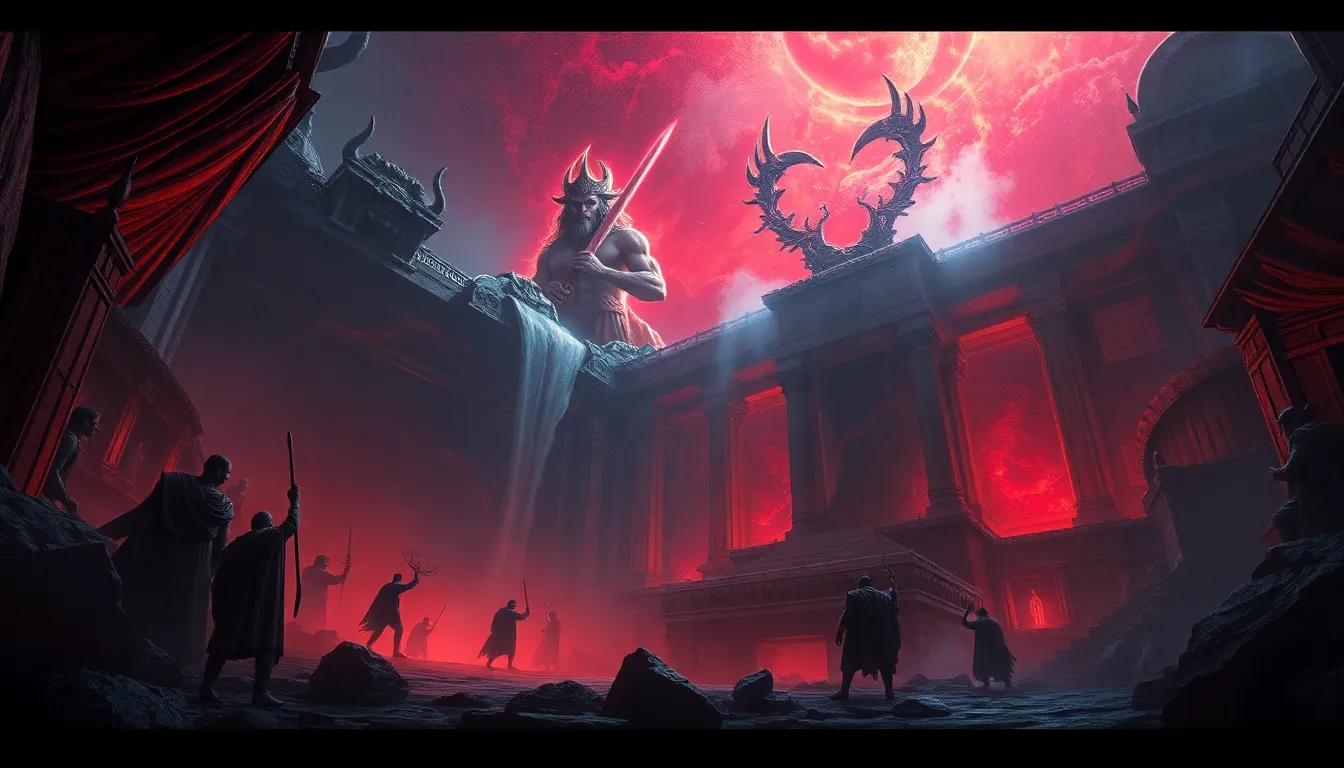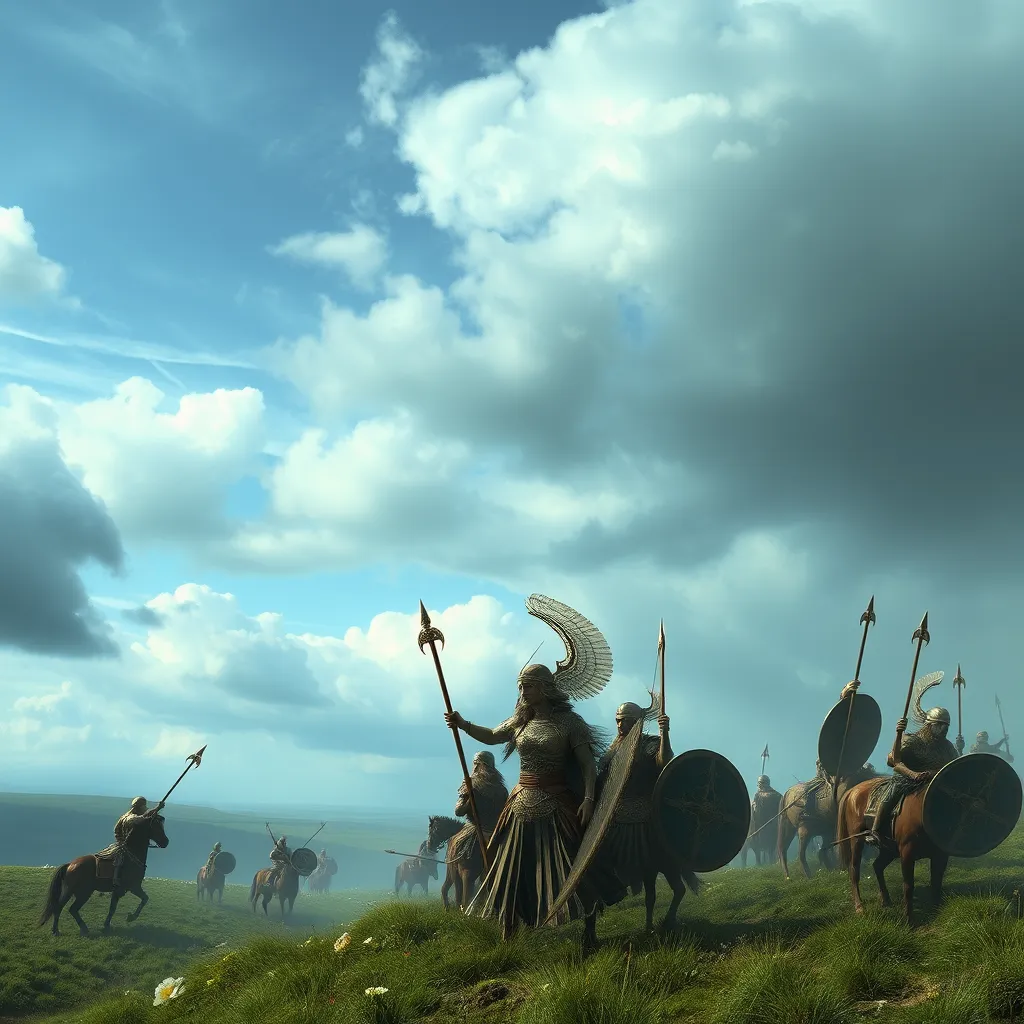Hades’ Realm: Exploring the Greek Underworld’s Gods and Monsters
I. Introduction to Hades and the Greek Underworld
Hades is one of the most enigmatic figures in Greek mythology, often misunderstood and misrepresented in popular culture. As the god of the Underworld, his domain is not merely a place of gloom and despair but a complex realm where the souls of the deceased reside. The Underworld plays a crucial role in Greek mythology, serving as the final destination for mortals and a place where the stories of gods, heroes, and monsters intertwine.
Exploring the gods and monsters that inhabit Hades’ realm provides a deeper understanding of ancient Greek beliefs about death, the afterlife, and the moral lessons associated with them. This journey into the Underworld reveals the multifaceted nature of Hades and the significant figures that dwell within his domain.
II. The Structure of the Underworld
The Underworld is depicted as a vast and intricate landscape, divided into several key areas, each serving distinct purposes for the souls who enter.
- Tartarus: Often considered the deepest part of the Underworld, Tartarus is a place of torment reserved for the most wicked souls. Here, punishment is meted out to those who defied the gods.
- Elysium: In stark contrast to Tartarus, Elysium is a paradise where the virtuous and heroic souls enjoy eternal bliss. This area is often associated with the heroes of Greek mythology.
- The Fields of Asphodel: This is the realm for ordinary souls who lived neither good nor evil lives. It is a dreary place, characterized by a sense of indifference, where souls wander aimlessly.
Each of these areas plays a significant role in the ancient Greeks’ understanding of the afterlife, reinforcing their beliefs about morality and justice.
III. Hades: The God of the Underworld
Hades is one of the three sons of Cronus and Rhea, alongside his brothers Zeus and Poseidon. After the defeat of their father, the brothers drew lots to divide the cosmos, with Hades receiving the Underworld as his domain.
As ruler of the Underworld, Hades oversees the realm of the dead, ensuring that souls are properly received and that the balance of life and death is maintained. Despite his fearsome reputation, he is not a malevolent deity; instead, he is often portrayed as stern yet fair.
Hades has a complicated relationship with other Olympian gods. While he does not actively participate in their affairs, his presence is felt, especially in matters concerning death and the afterlife. His interactions with mortals often highlight themes of fate and consequence.
IV. Persephone: Queen of the Underworld
One of the most famous myths involving Hades is the story of his abduction of Persephone, the daughter of Demeter, goddess of the harvest. According to legend, Hades fell in love with Persephone and took her to the Underworld to be his queen.
Persephone’s dual role as both the goddess of spring and queen of the dead symbolizes the cycle of life and death. Her annual return to the surface brings spring, while her descent into the Underworld heralds the arrival of winter. This cyclical nature of her existence reflects the ancient Greeks’ understanding of the seasons and agricultural cycles.
V. Notable Monsters and Creatures of Hades
The Underworld is home to various monstrous beings and creatures that serve specific functions within this dark realm.
- Cerberus: The three-headed dog that guards the entrance to the Underworld, Cerberus ensures that no souls escape and that the living do not enter without permission.
- Charon: The ferryman of the Underworld, Charon transports souls across the River Styx, the boundary between the living world and the Underworld. Souls must pay him with an obol, a small coin, to ensure their passage.
- The Furies: Also known as the Erinyes, these vengeful spirits punish those who commit grave injustices, particularly against family members. They are fearsome figures that embody the consequences of wrongdoing.
VI. The Souls of the Departed
Upon death, souls embark on a journey to the Underworld, where their fate is decided. The process involves the following steps:
- Crossing the River Styx with Charon.
- Undergoing judgment, often by three judges: Minos, Rhadamanthus, and Aeacus.
- Being sent to either Tartarus, Elysium, or the Fields of Asphodel based on their deeds during life.
Famous myths, such as that of Orpheus and Eurydice, illustrate the deep emotional connections between the living and the dead. Orpheus’ journey to retrieve his beloved Eurydice from the Underworld emphasizes the themes of love, loss, and the power of music.
VII. Myths and Legends Associated with Hades
Numerous tales feature Hades and his realm, each contributing to the rich tapestry of Greek mythology.
- The Abduction of Persephone: This myth not only tells of Hades’ love for Persephone but also explains the changing seasons.
- The Twelve Labors of Heracles: Heracles’ descent into the Underworld to capture Cerberus is a testament to his strength and bravery.
- The Judgment of the Dead: Various stories depict the judgment of souls, highlighting the moral implications of one’s actions in life.
These myths are significant in ancient Greek culture, serving both as entertainment and as moral lessons about life, death, and the consequences of one’s actions. In contemporary literature and media, Hades’ stories continue to inspire adaptations and reinterpretations, showcasing their timeless relevance.
VIII. Conclusion: The Legacy of Hades and the Underworld
Hades’ influence extends far beyond ancient Greek mythology, permeating modern culture and literature. His complex character challenges the simplistic view of death and the afterlife, inviting deeper reflection on themes of mortality, justice, and redemption.
As we explore the various aspects of Hades and his realm, it becomes clear that the Underworld is not merely a place of fear, but a vital component of Greek cosmology. The stories of Hades, Persephone, and the various creatures of the Underworld remind us of the intricate relationship between life and death, and the enduring human fascination with what lies beyond.
In conclusion, Hades remains a multifaceted deity whose realm continues to captivate and provoke thought, urging us to consider the complexities of existence and the inevitable journey we all must face.



